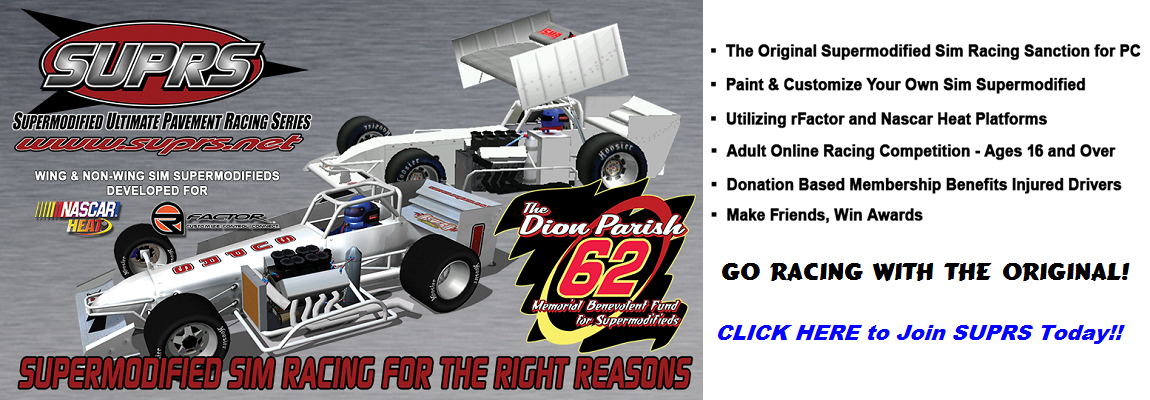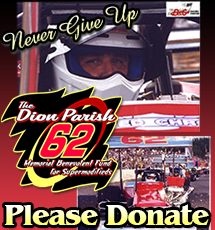Get to Know Why a Supermodified Race Car is Unique in Motorsports
This rare, exotic, ground pounding supermodified race car produces some of the closest, heart stopping racing action around and rightfully lays claim to the title of “The Ultimate Short Track Race Car.”
So just what is a supermodified race car? What makes them so special that those in the know will travel hundreds of miles just to get a glimpse of the increasingly rare beast?
To understand why a supermodified is a race car that has no short track equal, all one needs to do is realize that this open wheel race car is very lightweight, and produces copious amounts of gut-wrenching torque and horsepower. They are rare and exotic beyond imagination. No two are alike, the rules governing them are few and the fans that follow them are as knowledgeable and passionate as the drivers are brave.
Supermodifieds are Unique
Nearly all supermodifieds are built by hand in the car owner’s garage using methods as old as the auto industry. It’s not a simple task using a lathe by hand to ‘turn’ a part that you can’t buy off of the shelf and this is part of the reason there are so few supermodifieds in the entire United States and Canada. It’s a very tedious and tricky process making those machined parts fit just right on a one-off race car, and it takes a special breed of machinist, and tin man to continue on with this laborious effort. Supermodified owners, builders, drivers, crewmen, and fans tend are those that are artistic, out of the box thinkers that thrive on individualism.
Over the years the supers have been a proving ground for up and coming open wheel racers that moved on to make it big at the Indianapolis Motor Speedway and other professional racing divisions. These cars originally evolved from modified coupes in places as far-flung as Michigan, Idaho, Alabama, and Ohio. The supermodified has stayed true to its moniker-SUPER and MODIFIED, as the last of the true “run whatcha brung” outlaw race cars.
Supermodifieds are Lightweight with Big Engines
A supermodified is built around a 1½” tubular chrome moly steel chassis with about two inches of ground clearance. It has a minimal fiberglass and/or aluminum body for a total weight of between 1,650 to 1,850 pounds. Put that together with a methanol fuel injected 468cu in. big block or 412cu in. small block engine that produces 800+ horsepower costing upwards of $40,000, and what you have created is a race car that has copious amounts of gut wrenching power, is very little weight, and one the fastest short track, (paved ovals 1 mile in length or shorter), race cars in the world.
Supermodifieds Use Off-Set Chassis
Probably the most unique feature of this class is that the engine, as well as the drive line and rear end, is offset to the left side of the real center of the car. Moving these parts to the left of center adds up to nearly 70% of tire sticking left side weight bias. What this means is that the supers can go through an oval track’s corners faster than most circle track cars because the left side weight actually helps to pull the car down into the corner.
While the idea came from Indianapolis Motor Speedway and the roadster era,(which, ironically, also provided the supermodified division a lot of cars down thru the years after their racing life was done at the big track), it was taken to extreme measures and perfected by the late Jim Shampine at Oswego Speedway in the early 80s. This offset design is still essentially the backbone of all supermodifieds built.
Watch Jim Shampine Describe His Original Radical Off-Set Supermodified
Supermodifieds are Direct Drive
These cars have no clutch, transmission, battery or starter. This helps to save weight. They run by direct drive, where the drive shaft comes right off the back of the engine crank on the outside of the left frame rail straight to a “quick change” rear end which drives the offset aluminum or steel axle. The quick change rear end is so named because you simply need to take the back cover off of the magnesium “pumpkin” to get to the gears. Once there you can change the gear “set” simply by sliding both gears off of their respective shafts. How does a driver get it in gear? Very simply; by engaging a shift lever that is attached to a cable running to a lever on the quick change rear end. When engaged or “locked in” the driver is then ready for a push start. What this means is that all the power from the engine goes straight to the rear wheels through a drive shaft and guarantees that the one forward speed the supers have is blindingly fast!
Watch Supermodifieds Being Push-Started in Video Below
Supermodifieds Have Big Tires
Supers also use different size tires, they have an 28/17/15 right rear, 25/13.5/15 left rear, 25/13.5/15 right front and a 24/11/15 left front. These tire sizes improve grip and cornering speed and lead to a condition in oval track racing called “stagger.” This is where the right side tires are larger in diameter than the left side tires and helps the car turn into the corners. To understand stagger take a simple Styrofoam cup and lay it on its side with the bottom end pointed to the left. Now push the cup along the table and notice how it tends to roll toward the left because the diameter of the bottom, (or left side), of the cup is smaller than the diameter of the top, (or right side), of the cup. Now imagine a race car that is constantly turning left and you can see why stagger helps to increase lap times and cornering speeds.
The Supermodified Wing
On top of this massive powerhouse of engineering genius sits one of the main focal points for new fans. For all supermodifieds, other than those raced weekly at the legendary Oswego Speedway,(which is in central New York and is considered “The Home of the Supermodifieds” by all in the division), is a very important feature; the wing. With the International Supermodified Association, Midwest Supermodified Association, Englewood Racing Association, the 350 Small Block Supermodifieds at Lee USA Speedway and Star Speedway and the west coast supers based mostly at Madera Speedway in the Central Valley of California you will see a 24 sq foot aluminum wing attached to the car. The wing can be fixed, (solid mount), hydraulically, or pneumatically actuated and produces about 2200 pounds of downforce that allows better grip, handling, and extremely fast speeds.
With the articulating wing, air on the high-speed straight part of the oval tracks rushes over the top of the wing. This air pushes the wing down onto struts that are attached to the chassis or directly to the rear suspension of the car. In addition to creating down force, the wing “leveling out” actually lessens drag and makes for higher straightaway speeds. As the car enters the turns, where there are slower speeds and thus less air rushing over the wing, the wing rises back up and catches more air to create higher downforce to help the car stick where the need is most.
The results of all this technology give the winged supermodified grip and speed which rivals an IndyCar and at some larger tracks the supers actually have faster straightaway speeds than their open-wheel counterparts. As a side note; because of the skills needed to not only drive, but build and keep up a supermodified, many drivers as well as owners and builders have been able to make the jump to the big leagues of IndyCar racing.
Supermodifieds are Fast
It’s not uncommon to see a pack of winged supers three and four abreast, darting in and out of traffic and changing lanes in the middle of the turns. On the ¼ mile oval at Star Speedway in Epping, NH, the supermodifieds run times of about 11 seconds. On a bigger track such as the high banked 1/2 mile of Toledo, (OH), Speedway, the supermodifieds run times in the 13.50 second range at an average speed of 130 mph. At some of the larger tracks, speeds reaching up to 170 mph are not unusual, while on the one mile oval at Phoenix, (AZ), International Speedway and Pikes Peak Speedway, speeds nearing 190 on the chutes are the norm.
With impressive statistics such as this it isn’t hard to see why the supermodifieds bring large crowds of people to the tracks they run at and arouse the most primeval instincts known to the motor sports fans. This rare, exotic, ground pounding roadster produces some of the closest, heart stopping racing action around and rightfully lays claim to the title of “The Ultimate Short Track Race Car.”







